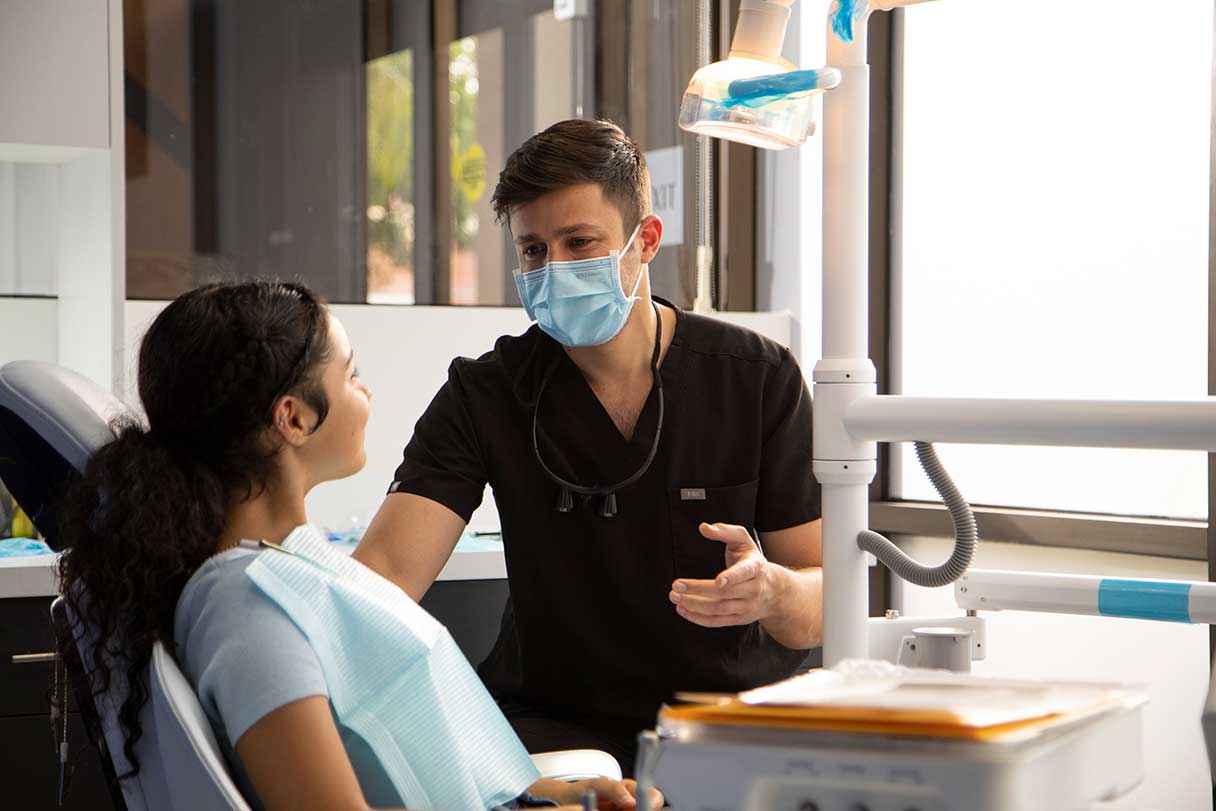Dental insurance plays a vital role in helping you maintain a healthy life. Some procedures that might feel out of reach are achievable with the right policy. But you'll get the best return on your investment if you understand the ins and outs of your dental plan and how to best take advantage of it.
For example, did you know that most dental insurance benefits reset every year?1 If you have any unused benefits, they may not roll over next year. In fact, only about 2.8% of people actually use all of their dental policy's annual maximums each year.2 This means a lot of benefits go unclaimed annually.
This is why it's particularly important to be familiar with your benefits, including what's covered, what's not and your coverage limits. These tips can help you examine your dental insurance plan, maximizing the benefits and minimizing out-of-pocket expenses.
1. Understand Your Dental Insurance Plan
To get the most out of your insurance plan, you need to understand exactly what type you have and how it works. To best grasp the ins and outs of your dental policy, follow these four steps:
Know what type of coverage you have
Your first step is to understand what type of coverage you have. Most dental policies are either DPPOs (dental preferred provider organizations) or DHMOs (dental health maintenance organizations), although there can be other types as well.3 That's why it's so important to read the fine print about your policy.
In general, DHMOs cost less than DPPOs, but they also have less flexibility. DHMOs have a smaller network of dentists, and you'll likely have minimal options to choose from.3
You'll find that most plans cover 100% of your preventive care and a percentage of other types of care.2 However, some DHMOs might set a specific copay amount for certain dental procedures rather than covering a percentage.4
Here's a look at how the plans typically compare.3 However, you'll need to read your policy for specifics, as there can be variations.3
Dental HMOs vs. PPOs
| Benefits | Dental HMOs | Dental PPOs |
|---|---|---|
| Premiums | As low as $200 a year | Typically $350 to $500 a year |
| Deductibles | Sometimes as low as $0 | Can be higher than HMOs |
| Network size | Small network, requiring a primary dentist | Larger network, no primary dentist required |
| Annual maximum | Sometimes no annual maximum | Often $1,500 or less4 |
| Out-of-network coverage | None | Yes, but costs more than in-network |
| Specialists | Requires referral | Doesn't require referrals |
Typically, you'll get your dental policy either through your employer, a state or federal health insurance exchange or as a stand-alone policy purchased directly from the insurance carrier.5
Identify your annual maximum and deductible
Knowing both your policy's annual maximum and deductible is vital for maximizing your benefits. The maximum refers to the highest amount your plan will pay toward your dental expenses — even if they're covered — in a single year. The deductible refers to how much you need to pay out of pocket before your insurance starts covering your expenses.3
Know your waiting periods and other limitations
You should also identify any waiting periods or limitations your policy may have on certain procedures. A limitation refers to a type of service that is typically not covered,3 such as a procedure for cosmetic purposes.
A waiting period is how long you have to wait to have certain types of dental work done after purchasing your policy.6 The wait can be a few months to a year.6 Preventive care typically doesn't have any waiting period, but a major procedure like a crown or a root canal might have a longer one.6 Often, the higher your monthly premiums, the shorter your waiting period will be.7
Research in-network dental providers
You'll also want to know which dentists are in your plan's network. Some plans have a large network, while others have a more limited one. If you have a favorite dentist, make sure they're in-network before purchasing your policy. Your policy will often have a web page where you can search for in-network providers, or you can call your insurance carrier to ask.8
2. Schedule Regular Preventive Appointments
One way to maximize your benefits is by taking advantage of any covered preventive services. Getting routine checkups, like twice-annual cleanings, helps keep your teeth and gums healthy. It also lets your dentist check for any problems that, left untreated, could be more extensive and costly down the road. Most dental plans pay for preventive care, so be sure to take advantage of this benefit for all covered family members.1
3. Maximize Your Annual Maximum
Most dental policies include an annual maximum that the plan will pay each year, and it resets at the beginning of the calendar year.1 You'll want to explore strategies to maximize this coverage.
For example, if it's close to the end of your plan year and you've already reached your annual maximum for dental coverage, ask your dentist about scheduling non-urgent treatments after your cap resets. This can help you minimize out-of-pocket costs. On the flip side, if it's close to the end of the year and you haven't used your annual maximum yet, you'll want to schedule some procedures before the end of the year.
4. Understand What's Covered and What's Not
You'll need to dig into the specifics of your policy to understand exactly what's covered and what's not. Although the details will vary from policy to policy, your plan may look something like this:
Dental procedures commonly covered by insurance
While each policy is different, most dental insurance plans cover at least a percentage of certain types of dental work. For example, many plans cover 100% of preventive care, 80% of basic procedures and 50% of major procedures.4 However, you'll need to double-check your policy to find the specifics.
Typically covered services include:
- Twice-a-year preventive cleanings and exams3
- Preventive X-rays3 (some plans may only cover them every three years rather than yearly)4
- Fillings4
- Crowns and implants5
- Root canals5
- Dentures and bridges4
- Oral surgery like tooth extractions4
- Some dental appliances5
- Emergency dental surgeries5
Common limitations and exclusions found in dental plans
Most dental policies have limitations or types of dental work they typically won't cover. While this can vary from policy to policy, here's a look at what generally isn't covered:
- Orthodontics like braces5 (unless you have a rider specifying coverage)4
- Cosmetic procedures like teeth whitening5
- Experimental procedures4
- Procedures not performed under a dentist's supervision4
- Preexisting conditions4
5. Take Advantage of Discount Plans or Additional Benefits
Just because you have dental insurance doesn't mean you shouldn't look into discounts and additional benefits that can add even more value to your policy.
For example, your dentist might offer a discount plan that takes a percentage off your total cost.6 These plans might require a monthly or yearly payment on top of your dental insurance premium.
There are also dental discount plans (or dental savings plans) offered by outside companies, like dental health insurance carriers, traditional health insurance carriers or others. You'll pay a yearly fee to access a discounted cost for your care. This can help if you already reached your dental insurance's annual maximum or need work done that isn't covered. Before purchasing a plan, make sure your dentist accepts it.9
6. Budget for Out-of-Pocket Expenses
Having dental insurance doesn't mean all your dental expenses will go away. You'll still need to budget for anything that isn't covered or for bigger procedures that exceed your annual maximum.
Before getting any major procedure done, ask your dentist for a pretreatment estimate that includes how much your insurance covers.4 This will let you know what to expect on the out-of-pocket side.
FSAs or HSAs
When it comes to accommodating extra expenses, there are different approaches you can take to paying for them, and one option is using a healthcare savings account.
As an employee, have your employer set up a flexible spending account (FSA) for you. With an FSA, a certain amount of money is deducted from your paycheck every month, pretax. You can use the money in the FSA to help pay for dental expenses that insurance may not fully cover, such as braces, teeth whitening and cosmetic dentistry. In most cases, you'll need to use any funds in your FSA by the end of the calendar year.2
If you're self-employed, you'll need a health savings account (HSA) instead of an FSA. You can typically contribute a maximum of $3,650 a year to an individual HSA (plus an additional $1,000 if you're 55 or older). HSA funds may have more limitations on how they can be used, so read the terms closely.10
Using other payment plans or discount plans
Your dentist's office may offer a discount plan or payment plan to help reduce the total cost.9 Discount plans may require a monthly or yearly fee. You can also find discount plans from outside sources, like insurance carriers.9
Dental insurance can help you get all the preventive care you need and assist in covering the cost of major dental work. However, to get the most out of your plan, it's essential to understand the fine print, such as annual maximums, waiting periods and deductibles. With a little foresight and planning, you can make the most of your policy every year.
Dental Financing With the CareCredit Credit Card
Regular dental checkups are important to help prevent, identify and treat dental problems before they become more advanced. The CareCredit credit card can help you pay for dental exams, cosmetic dental procedures and other costs that insurance doesn't cover — to help you keep your pearly whites bright and healthy.* Apply today and use our Acceptance Locator to find a dentist near you that accepts CareCredit. Make the most of your wellness journey by downloading the CareCredit Mobile App. You can find a provider on the go, manage your CareCredit account and easily access the Well U hub for more great articles, podcasts and videos.
Author Bio
Stephanie Dwilson specializes in science journalism, breaking news and animal health and is a business owner, non-practicing attorney and writer.







